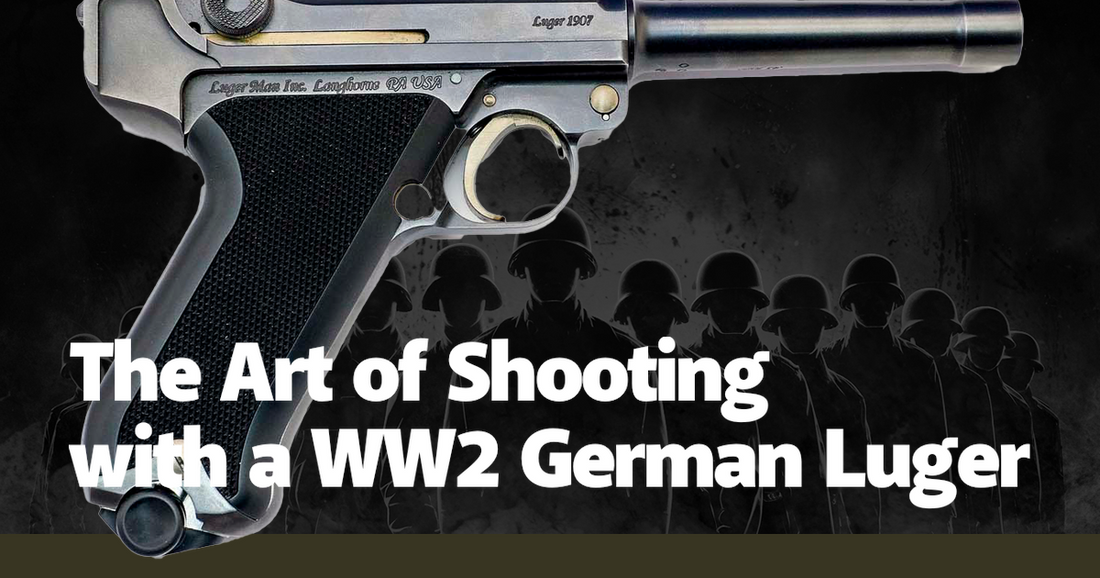The Luger P08, often simply referred to as the Luger, is an iconic firearm that has captured the imaginations of military enthusiasts and historians alike. This semi-automatic pistol, designed by Georg Luger in 1898, was widely used by German forces during World War II. The distinct aesthetic and mechanical precision of the Luger make it a fascinating subject for those interested in the art of shooting historical firearms. Holding a Luger is akin to holding a piece of history, and firing one is an experience that melds the past with the present in a visceral way.
Shooting a Luger is an exercise in understanding the intricate balance of engineering and design. The pistol's toggle-lock mechanism, which is both its most distinctive feature and its most complex, operates differently from the more common slide-action pistols. When you pull the trigger, the recoil forces the toggle to bend upward, ejecting the spent cartridge and chambering a new one. This motion, which can be likened to the movement of a knee joint, is both mesmerizing and mechanically satisfying. The precision required to maintain and operate this system speaks volumes about the engineering prowess of its designers.
The grip of the Luger is ergonomically designed, fitting comfortably in the hand and allowing for a natural point of aim. This design was ahead of its time and contributes to the pistol's reputation for accuracy. When you raise a Luger to fire, the sights align almost instinctively with your target. This intuitive aiming mechanism is not just a matter of design but also a testament to the practical experience of its creators, who understood the importance of a firearm that could be quickly and accurately aimed in the heat of battle.
Firing a Luger is an experience that combines auditory, tactile, and visual stimuli into a singular moment of historical reenactment. The sharp report of the 9mm Parabellum round, the slight upward jerk of the muzzle, and the sight of the toggle flipping upward and then snapping back into place all contribute to a sense of connection with the past. Each shot fired is a reminder of the countless soldiers who once relied on this weapon in the chaos of war. The Luger is not just a firearm; it is a bridge to a time when the world was engulfed in conflict.
The Luger’s historical significance cannot be overstated. It was used by German forces in both World Wars and became a symbol of military prowess and engineering excellence. Captured Lugers were highly prized by Allied soldiers, often kept as war trophies. Stories abound of soldiers risking their lives to retrieve a Luger from the battlefield, driven by the pistol’s reputation and the allure of its distinctive design. These anecdotes add a layer of human interest to the Luger, making it more than just a piece of metal and machinery.
Maintaining a Luger is an art in itself. The pistol’s complex mechanism requires careful attention and regular maintenance to function correctly. Disassembling and cleaning a Luger involves a series of precise steps that, if not followed correctly, can result in damage to the firearm. This meticulous care is part of the Luger’s charm; it demands respect and attention from its owner. The process of maintaining a Luger is a ritual that connects the present-day enthusiast with the soldiers and armorers of the past, who would have performed the same tasks under far more trying conditions.
The Luger has also left a lasting legacy in the world of firearms design. Its influence can be seen in many modern pistols, which have borrowed elements of its ergonomic grip and intuitive aiming system. Even the toggle-lock mechanism, though largely abandoned in favor of simpler designs, remains a fascinating example of early 20th-century engineering. The Luger’s blend of form and function has inspired countless designers and continues to be studied by those interested in the evolution of firearms technology.
In conclusion, the art of shooting with a WW2 German Luger is a multifaceted experience that goes beyond the simple act of firing a gun. It is an exploration of historical engineering, a connection to the past, and a testament to the enduring appeal of a well-designed firearm. Whether you are a military historian, a firearms enthusiast, or simply someone who appreciates the finer points of mechanical design, the Luger offers a unique and compelling experience. Its legacy, both as a weapon of war and as a piece of engineering art, ensures that it will continue to captivate and inspire for generations to come.

